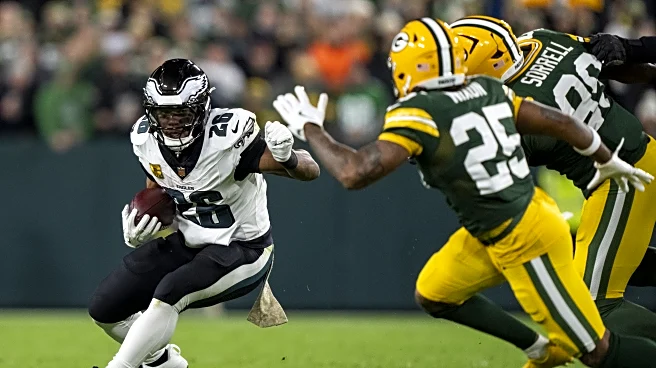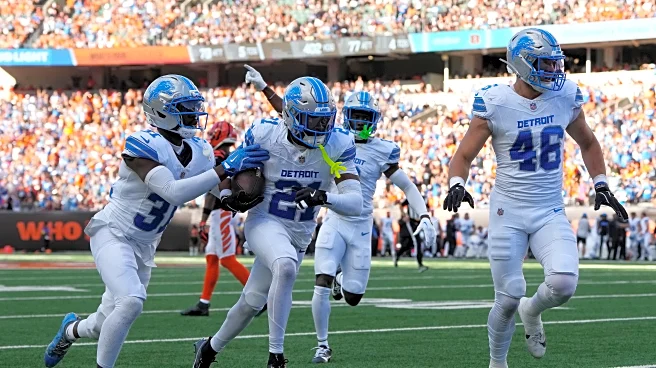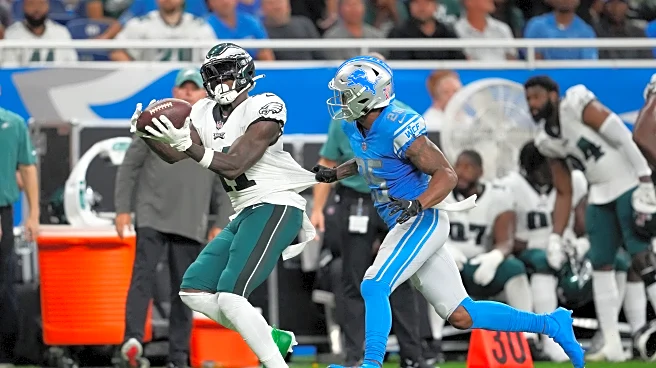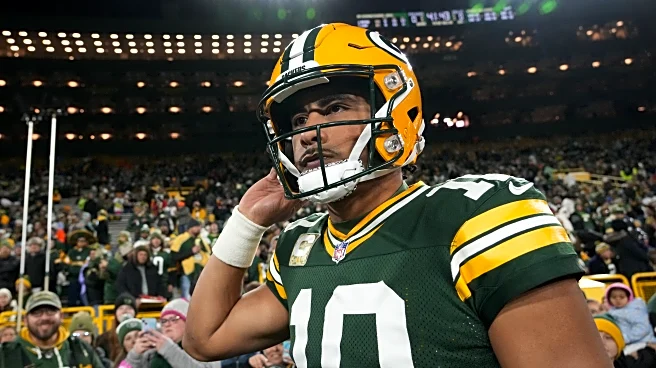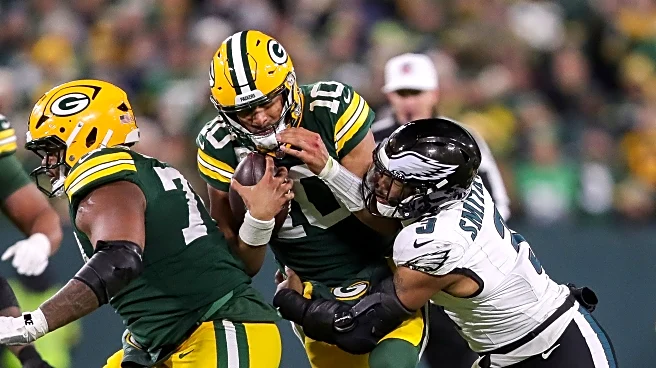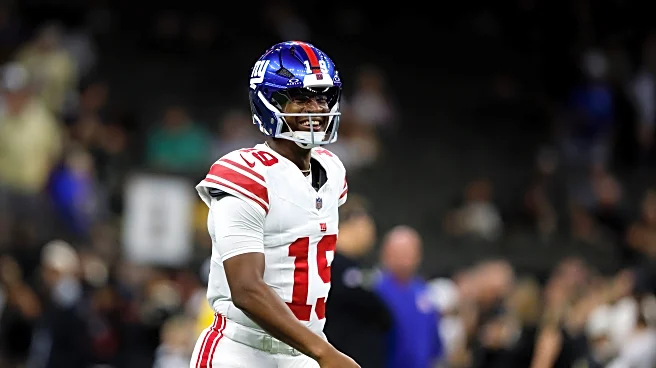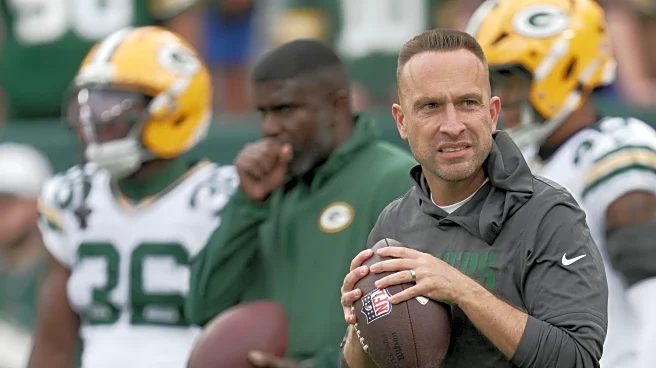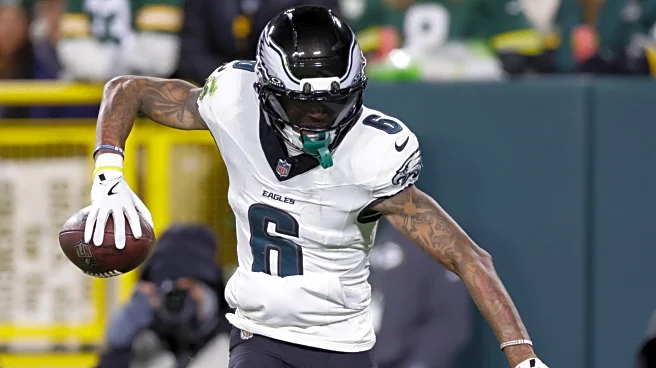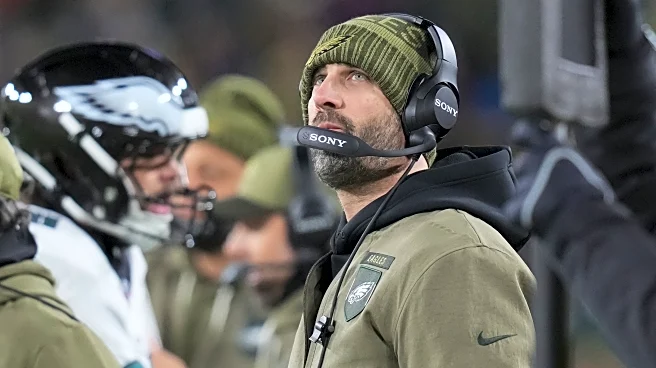The Green Bay Packers’ defense, again, did more than enough to win the game. Against the defending Super Bowl champion Philadelphia Eagles, whom they held to just 10 points, they found ways to stop a high-powered
offense led by Saquon Barkley and AJ Brown. Unfortunately, the offense did not hold up its end of the bargain; the game ended 10-7, even with the defense getting the ball back to the offense twice in the final two minutes.
The Packers defense held Barkley to just 2.7 yards per carry and held AJ Brown to two catches for 13 yards. Barkley did have a 20+ yard run wiped out due to holding, but even that likely would have been a limited gain because it seemed like the defenders were in good position on their pursuit angles to limit his run.
Jalen Hurts only completed two passes over 20+ air yards, and one was an underthrown pass to Devonta Smith that he ripped away from Evan Williams before scoring. The defense even forced a turnover on the Eagles’ first drive that the offense could do nothing with.
To limit Barkley’s effectiveness, defensive coordinator Jeff Hafley had to figure out when to call run defenses against the Eagles in certain situations. On running downs, the defensive call would often drop safeties Xavier McKinney and Evan Williams into the box from depth as the B-gap run fitter with the defensive end pushed wide.
Hafley’s system is similar to Robert Saleh’s (49ers defensive coordinator) in that the defensive ends are box players who will not play heavy into the B-gap a majority of the time, preferring instead to have linebackers and safeties fit those gaps. They can do this out of cover-3 or quarters. The only difference post-snap is where the safeties would end up in pass coverage.
From cover-3, the run fits become 1-gap, where each defender in the front has one gap responsibility. The safety becomes a box player. Where he fits the run is up to the play call. The safety becomes a force or fold player. On a run to the safety’s side, he becomes the force player on the edge to turn the ball back inside. On a run away, he becomes a fold player filling any open gap. The rest is play call dependent, and these are not hard and fast rules.
On the first drive of the game, we get a good example of this, where Williams’s late rotation makes him the secondary force player down in the box after the motion pushes Barkley back inside to help as he fills the C-gap.

The Eagles are running a wide zone out of pistol to the strong side. In the run fits, Williams is the C-gap fitter with Isaiah McDuffie setting a hard edge with outside leverage on the tight end to force the ball carrier back inside on his outside zone read.
Williams plugs the C-gap and flashes in it when Barkley gets there, turning him back inside to the pursuit for a minimal gain.
The Eagles ran multiple six-offensive linemen formations, bringing in an extra lineman as an eligible receiver in this game, too. This was the first time all season they had lined up in this personnel group, yet still, the Packers were ready for it.

Later in the second quarter, Williams triggers quickly just before the snap into the B-gap.
As Barkley takes the handoff. As soon as he gets the ball, Williams is there for the stop with a great open field tackle after great recognition of what the Eagles like to do offensively from similar formations.
From quarters, the play call usually has the linebackers cheat over on run defense calls and asks the safety to fill the C-gap to the tight end side with the defensive end as the force player. In the Saleh tree, from which Hafley is from, the technique is broadly known as “stab.”

At the snap on a run, the safety triggers quickly as a primary defender in run support, stabbing like a knife into the gap.
In these examples versus two duo run calls from the Eagles, the defensive call puts Williams to the tight end side as the primary support defender in the box. Doing this allows the defense to bottle up duo because the MIKE linebacker can fit in the playside A-gap where the running back makes his choice to bounce outside or find a crease in the middle by reading the MIKE fit.
Fitting a safety from depth messes with Barkley’s read because if he bounces to the tight end side on his read, there’s nowhere to run, so he has to try to make something out of nothing in the middle of the formation.
Hafley was certainly ready for what the Eagles wanted to do. Contrast that with the end of the game talk about the Packers’ offense being predictable. On a snap late in the 4th quarter that would ultimately end the game, the Eagles’ defense called out where the Packers were going to run the ball. The Packers ran it where the Eagles said they would and forced Josh Jacobs to bounce and fumble.
But with the way Hafley got the defense into certain alignments post-snap, I was curious if the Eagles may have been a bit more predictable than is currently being talked about. Sure enough, what I found didn’t surprise me.
An example of this is the Eagles’ pin and pull toss play out of shotgun with Barkley offset next to Hurts. Shotgun reduces the number of ways teams can run the ball effectively; it’s either going to go opposite of where the back aligns or will be a toss out to the edge because anything else will mess with the mesh point handoff.
Against Carolina, the Packers struggled to contain the Panthers’ toss plays and had trouble replacing crack-blocked defenders. The Eagles probably saw that on tape and thought they could get a cheap one. On one play, Barkley did rip off a 21-yard run, but it was called back due to holding on the perimeter.
Here, they read it perfectly and got downhill and to the edge and kept Barkley moving horizontally to the sideline.
A little film study may have helped here too. Any time the Eagles have run this toss play recently, this ended up being their primary alignment. This happened on several other running plays too out of certain formation alignments throughout the game. Hafley had them prepared.
Final thoughts
There isn’t anything else the defense can do right now. The offense needs to figure out its 2025 identity in a post-Tucker Kraft world. So far, they’re squandering a championship-level defense.
